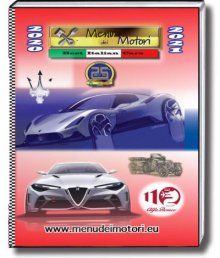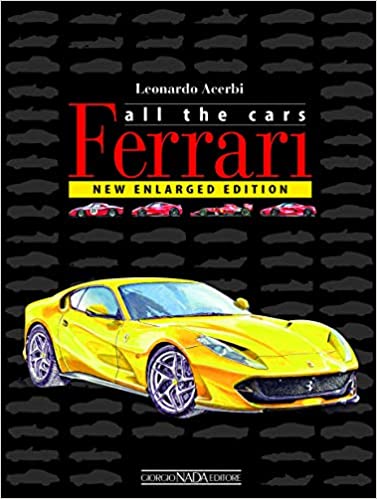
The first and only “virtual gallery” with all or almost all the models produced by the Maranello firm from 1947 to the present day, drawn by an artist of the calibre of Giorgio Alisi. Detailed technical files and texts by Leonardo Acerbi, an established historian of the marque, complete this unique overview of the Prancing Horse and its history.
First published in the mid-2000s and reprinted on a number of occasions, Ferrari All the Cars reviews, model by model, all the most significant cars produced by the Maranello firm from 1947 to the present day. From the Auto Avio Costruzioni of 1940, the Ferrari precursor, to the 125 S, the first car to carry the Prancing Horse badge and the Ferrari name, through to the latest Portofino, the reader explores unforgettable icons of automotive history. Among them, to mention but a few, are models such as the 250 GTs, the Testa Rossa, the 250 GTO, the 250 Le Mans and the 275 GTB, through to the latest creations – 812 Superfast, Portofino GTC4 Lusso e Monza SP1/SP2 – by way of the 365 GTB/4 “Daytona”, the 512 BB, the 308 GTB and many others. Then, naturally, there are all the F1 single-seaters from 1950 to the present day, those that have permitted the Prancing Horse to win 15 World Driver’s Championships and 16 Constructors’ titles, and the unforgettable Sports cars and Prototypes, undisputed protagonists for years in the enthralling endurance classics such as the Le Mans 24 Hours and the Targa Florio.
The files on each model are complemented by an accompanying image, brief but pertinent contextual texts and detailed technical specifications. Ferrari All the Cars is a unique book allowing you to have a complete history of Ferrari and its unforgettable cars always to hand, an authentic vademecum of the Maranello firm. This new edition of the book has also been enriched with a series of files devoted to the unforgettable concept cars created by Pininfarina around Ferrari mechanicals. Iconic models such as the 365 P Speciale, the 250 P5, the P6, the 512 S and the Modulo, through to the Sergio, cars imbued with styling motifs that in many cases were to be transferred to the production models.
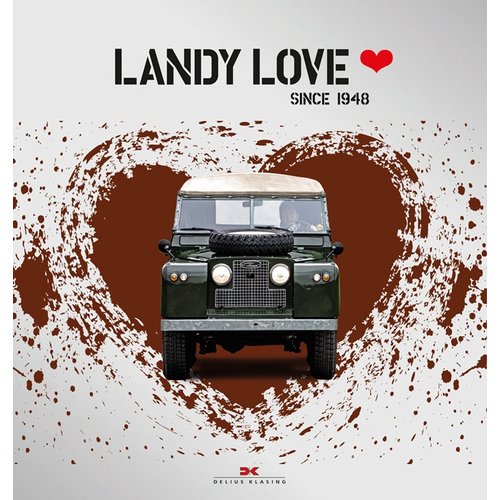
- Fascinating Land Rover love stories from around the globe
- Includes magnificent new photos
- Portraits of passionate owners – faithful Landy owners discuss their adventures
- Celebrates the many uses of the Land Rover, from a wine-growing estate in South Africa, to the urban jungle in Germany, as well as Land Rovers used by the emergency services, as mobile cafes, and as a means to cross the Alps
On 29th January 2016 the last Land Rover Defender left the factory halls in Solihull (UK) – a Defender 90 Soft Top with heritage outfit – and went directly to the Jaguar Land Rover Collection exhibition. With this, a great story of success ended: the most original of all Land Rover models had been in mass production for 68 years. In 1948 it was developed for agricultural use, but the robustness of the all-wheel drive vehicle got round quickly. The demand never decreased and there were always new versions and engines. Today, 75 percent of all ‘Landies’ ever built are still in use worldwide.
This declaration of love for the British classic presents portraits of all Land Rover generations and of their most passionate owners.

In production from 1966 to 1985, the Pininfarina-designed 124 Spider was a huge export success for Fiat with over 170,000 examples being sold in the USA alone, whilst the 124 Coupe, styled by Boano, also enjoyed sales success throughout the world between 1967 and 1975. Both cars used Fiat’s willing and technically advanced twin-cam engine in sizes ranging from 1400 to 2000cc. Towards the end of production the Spider even enjoyed supercharged performance in its Volumex form.
Not to be forgotten is the 124 Spider’s important rule in international rallying during the 1970s, when the cars created and homologated by Abarth were very successful and always newsworthy. Over 1000 examples of the legendary Fiat-Abarth 124 Spider were built and today, deservedly, these traditionally black-bonneted/hooded cars enjoy great status amongst serious collectors.
Here, from an enthusiast author, is the complete history of these important cars, including motorsport. Also within these covers the enthusiast will find expert advice on which model to choose, restoration, clubs, specialists and what it’s like to live with a Fiat 124 Spider or Coupe.
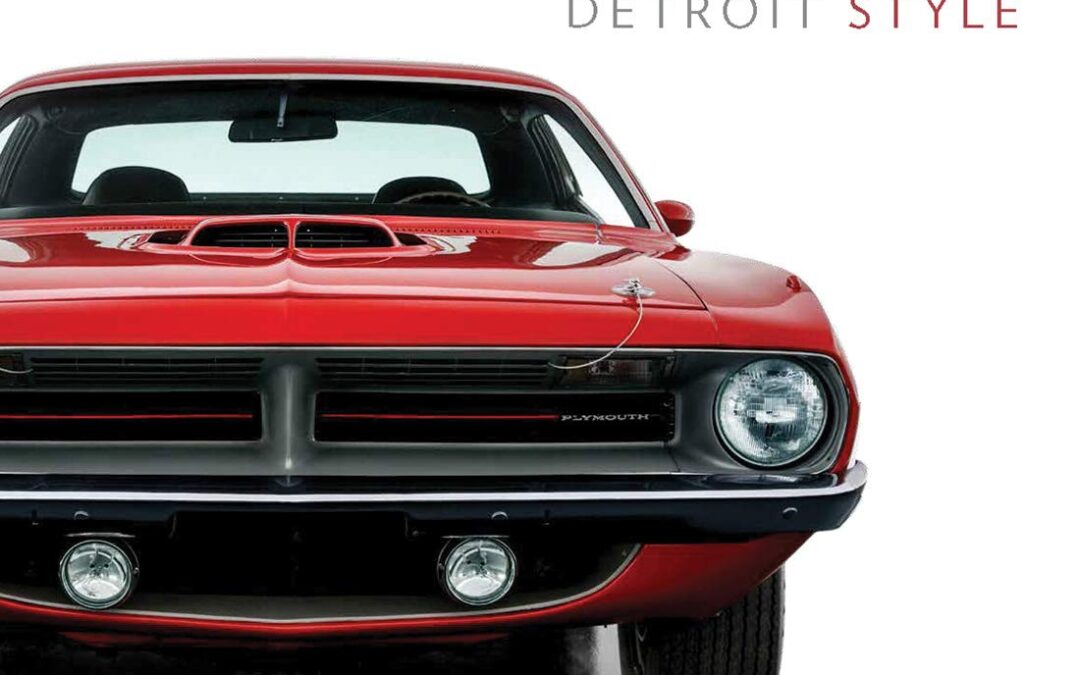
A dynamically illustrated exploration of 70 years of automotive design in the Motor City
Detroit, nicknamed Motor City, has always been a leader in car design. As the city became the center of the American automobile industry in the early 20th century, its studios became incubators for new ideas and new styles. This volume highlights the artistry and influence of Detroit designers working in the industry between 1950 and the present day, giving readers a sumptuously illustrated opportunity to discover the ingenuity of influential (and surprisingly little-known) figures in postwar American car design. Detroit Style showcases 12 coupes and sedans, representing both experimental cars created solely for display and iconic production models for the mass market. Dozens of design drawings and images of studio interiors—along with paintings and sculptures—highlight the creative process and dialogue between the American art world and car culture. These materials in addition to interviews with influential figures in car design today bring new insights and spark curiosity about the formative role Detroit designers have played in shaping the automotive world around us, and the ways their work has responded to changing tastes, culture, and technology.
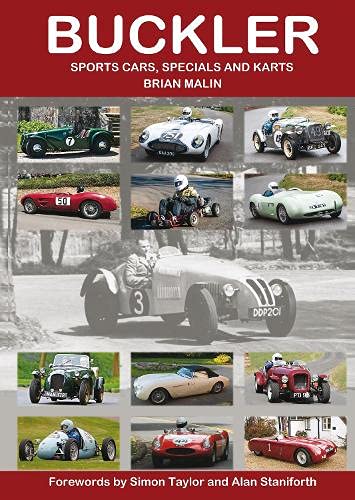
Although they were born 18 years apart, Derek Buckler and Colin Chapman were contemporaries when it came to designing and building ground-breaking sports cars in the late 1940s and early ’50s. They had much in common. Both were innovators, especially in areas of chassis design and improving the handling characteristics of their cars. Both founded successful companies and both died relatively young, Chapman in December, 1982, at the age of 54, and Buckler in 1964 at just 53 years of age. Yet, while Chapman’s Lotus went on to achieve worldwide fame, the name Buckler remains comparatively little known.
Special building was popular in the 1950s, mostly using ‘donor’ chassis from Austin 7 or Ford or simple ‘ladder’ frames but Buckler offered a multi-tubular space frame which was both stronger and lighter and, moreover, available in different models to suit different applications. He was also always ready to adapt his products to his customers’ requirements. In all of this, Buckler’s aim was to provide the impecunious enthusiast with a versatile sporting vehicle which could be used as daily transport during the week and, at weekends, in a wide range of motor sporting events from trials and driving tests to out and out racing. Often, however, the resulting Special would carry a name that concealed the Buckler contribution and a major part of the significance of Malin’s book and the vast amount of painstaking research put into it by its author is that much of that contribution is now revealed.
Buckler also, of course, made a range of complete cars starting with the versatile Mk5 and 6 and going on to encompass DD1 and DD2 with De Dion rear ends and the BB100 with backbone chassis introduced considerably before Lotus’s Elan and their other similarly based models. When karting became popular in the early 1960s, Buckler’s space frame technology found another application for which it was ideal and it became a major player in this burgeoning branch of motor sport. Buckler was also successful with its range of accessories including engine and transmission components and most notably its much admired close-ratio gears.
Brian Malin, the author, first owned a Buckler car in the 1970s and today competes in his Mk 5 in hill climbs and other events. He is an active member of the Buckler Register as well as the British Historic Kart Club and is often to be seen racing or demonstrating his Buckler kart so he is well placed to compile this comprehensive history of all things Buckler. It was first made available in loose-leaf form as long ago as 1990 but this is its first publication as a fully-fledged book, revised, updated and with additional material. Chassis design guru – and Buckler owner – the late Alan Staniforth provided the original foreword and this has been updated and included along with a new foreword by commentator and doyen of motor sport journalists, Simon Taylor.
The fourteen chapters begin with ‘Buckler and the Company’, cover the production and racing cars with some individual histories, the Buckler accessories including one chapter on the badges alone, overseas distribution – New Zealand was a particularly strong market for Buckler – and a fascinating section on the car advertisements before going on to cover the kart story in similar detail. The same number of appendices include reproductions of road tests, articles written by Derek Buckler, specifications of close-ratio gears and Buckler-tuned Ford engines, kart track tests and even one on Buckler letterheads. Malin’s work is truly encyclopaedic and therefore remarkable value for money not just as a reference on the Buckler marque but for its entertaining insight into the world of amateur motor sport of its time. The hundreds of illustrations range from reproductions of high quality contemporary and recent photographs to some admittedly lower quality originals, some of them obviously retouched to improve clarity, whose inclusion is well justified for their essential contribution to the Buckler story.
Brian Malin is to be congratulated for his perseverance in finally bringing to publication a book which is, to all intents and purposes, the full Buckler story.
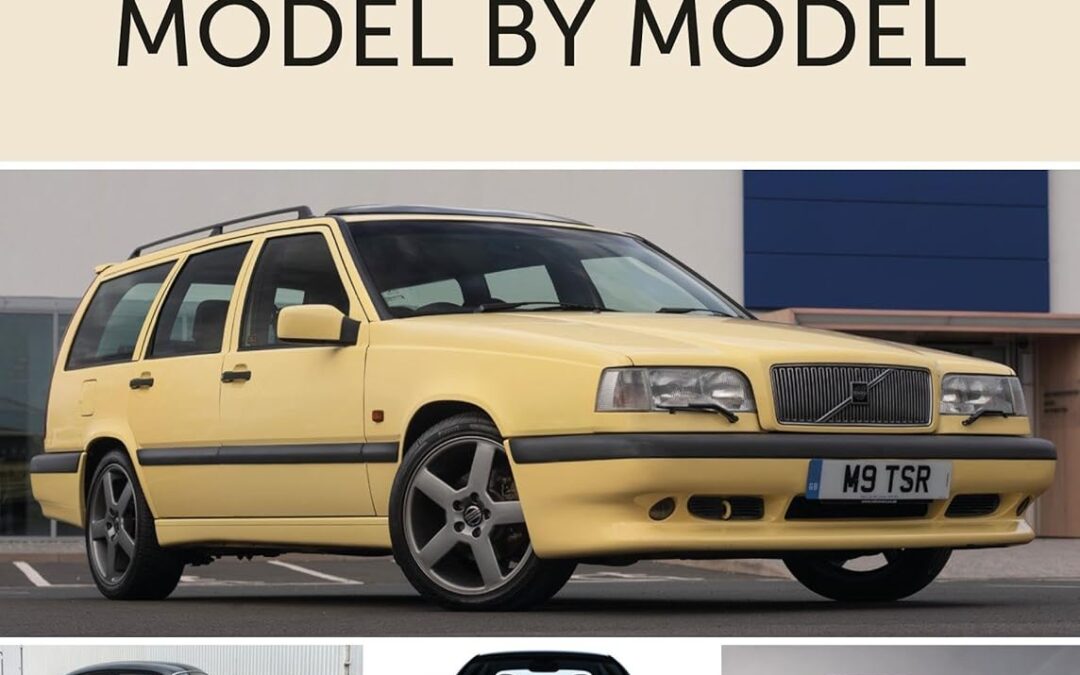
The book invites the reader, both Volvo fans and those with a more general interest in motoring – on board the company’s landmark cars. Volvo Model by Model brings Volvo to life with the feel of the cars from behind the wheel, from the side-valve ÖV4 to the electric C40, with legends like the 240, the XC90 and the 850 in between. Volvo’s marketing strategies from safety to sporty and back again are examined, with thoughts from contemporary road tests. So buckle up your Volvo-patented three-point safety belt, and prepare for the ride. In the 2020s Volvo is undergoing a resurgence, gaining mainstream desirability with record sales for six consecutive years. There is also huge interest in wider Scandinavian culture and design. Volvo Model by Model is a new look at the cars and cultural impact of Volvo. Always daring to be different, no other car manufacturer encapsulates its home nation so completely, accounting for one third of the Swedish dream Villa, Volvo, Vovve. Volvo started in 1927 but the open-topped ÖV4 didn’t sell well in the harsh Swedish climate. This was a rare misstep, although there have some challenging aesthetics on the way like the 760. Volvo survived a failed marriage with Ford, which still produced one of the company’s all-time best sellers. Volvo now has another home, China. Parent company Geely enables Volvo to freely express its Scandinavian style, and today’s slick Swedes were voted the best-designed range of cars by British motorists. Concept Recharge points the way to an electric future.

A New Kind of Travelogue
Take an unusual, sometimes spooky, but always fun trip through the Golden State with this little travel companion—perfect for toting on an impromptu road trip or long-planned vacation. Visit the haunted Star of India and USS Hornet. Find out who is really living in a mysterious ghost town and wandering the halls of the “stateliest ship afloat.” Experience the electrifying ghosts of Universal Studios and the invisible inmates who forever roam “the Rock.” Ten popular and easy-to-access locations will show readers what a dark vacation is all about. From Alcatraz to the Calico Mountains to San Diego’s Old Town, California is a haunted paradise ready for you to explore . . . if you dare!
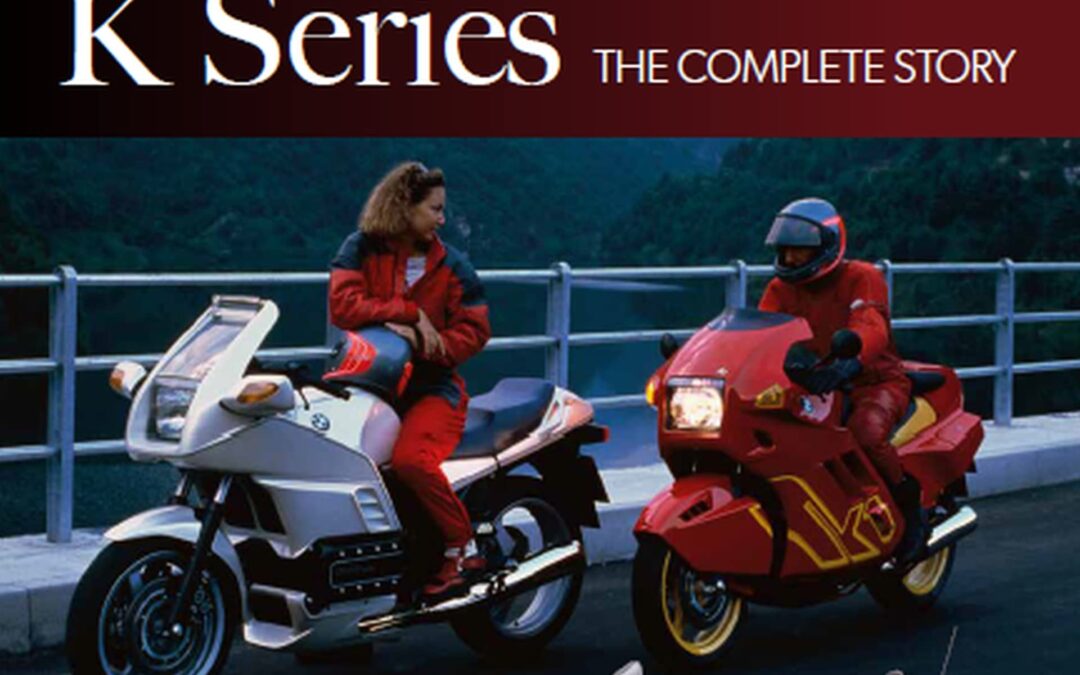
While BMW motorcycles remain mostly associated with its R-series shaft-drive boxer twins, it’s the K-series liquid-cooled ‘multis’ that have been – and remain – the German firm’s most advanced, radical and downright wacky bikes of all. Launched in 1983 to propel BMW into a whole new era, the K-series has included some of the world’s most innovative and interesting motorcycles. From the original liquid-cooled, fuel-injected K100, to the radically aerodynamic K1 of the 1980s; the ultra-powerful K1200RS and space age K1200LT of the 1990s; and the ‘Duolever’ K1200S and 6-cylinder K1600 of the 2000s and beyond, BMW’s ‘Ks’ have always been special, but also so advanced and pioneering that they’ve helped shape the whole of modern motorcycling. BMW expert Phil West, author of BMW Airhead Twins and BMW GS, also published by Crowood, has again painstakingly researched their complete history, found pictures never published before and recounts the whole K-Series story in a comprehensive and engaging tale.
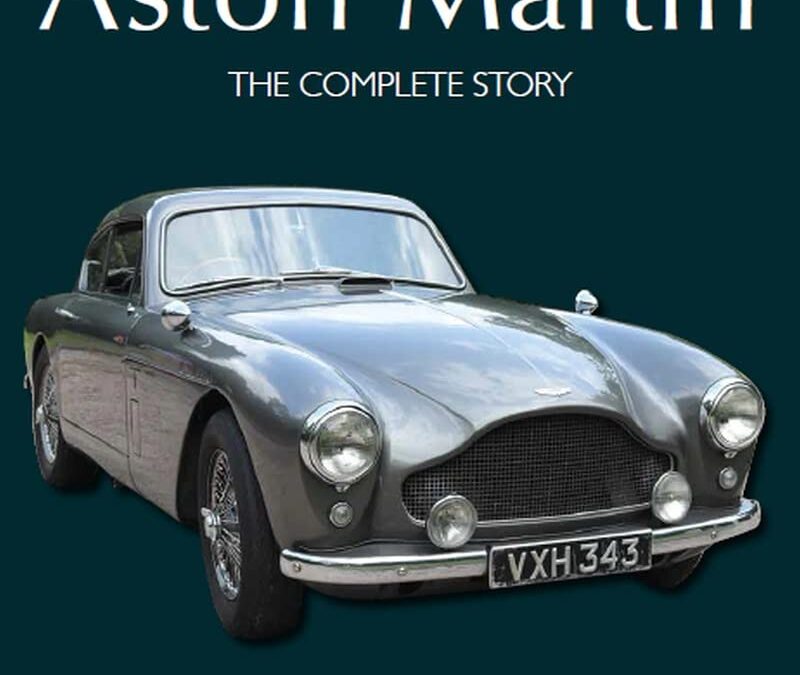
Aston Martin is a marque that holds a special place in the British motor industry. As a manufacturer of cars for over 100 years, its history is tied up with the British psyche, and the marque holds a special place in the hearts of all motoring enthusiasts. This book charts the history of Aston Martin from its early days in central London, as Banford and Martin, through the Bertelli years in Feltham and the post-war David Brown years at Newport Pagnell to the current day with its purpose-built, state-of-the-art factory in Gaydon, Warwickshire. Now seen as an iconic luxury British sports car manufacturer, Aston Martin has been designing, manufacturing and racing cars for over 100 years, almost continuously. Known for combining quality, style and performance in its products, the company has often struggled to balance these attributes with financial success. Fortunately, over the years generous investors who recognize the potential in the company have always been on hand to rescue and perpetuate the brand. Looking at the engines, the cars, the people, the business and car owners, this book tells the story of a quintessentially British marque.

Contrary to popular belief, ‘Fluxie’ did not enter the world on full opposite-lock, nor did he have a cigarette in one hand and a pint in the other. Destined to race, he never got the biggest breaks but he did become one of motorsport’s most colourful and best-loved characters, someone who has always lived life to the full.
Ian Flux’s autobiography tells it how it was, covering not only the highs — including five championship titles — but also the many setbacks. Along the way we laugh with him about much of it, particularly the pranks, but also learn about some dark times that he has never previously divulged.
- Early days: growing up on a farm, first kart aged 6, muddling through in the classroom, lots of laughs — but also sexual abuse from a schoolmaster and an early racing mentor.
- The spark ignites: starting to race in 1970 with a Formula 6 kart, then onwards to Formula Vee; brushing shoulders with Formula 1 working for the Token and Graham Hill teams.
- Grabbing the chances: a Formula Vee title in 1975 leads to Formula 3 and Formula Atlantic, but still with various jobs to make ends meet, including as mechanic to motorcycle racing legend Giacomo Agostini for his four-wheel efforts.
- Diversifying into sports cars: successful adventures in Sports 2000 and Thundersports, winning championships in both, plus Thundersaloons.
- A true all-rounder: going into the British Touring Car Championship from 1988 in a wide range of tin-tops; racing a Jaguar XJR-15 in the big-money 1991 series held at Grand Prix races, including Monaco.
- Championship double in 1996: the ‘golden year’ in the TVR Tuscan Challenge and the British GT Championship, the latter with a McLaren F1 GTR.
- So much else: racing on into recent times, notching up nearly 50 years on track; testing competition cars for Motorsport News; driver tuition and track-day demonstrations.
This is a very different kind of racing driver’s memoir, with lots of laughs along the way together with searing personal honesty.
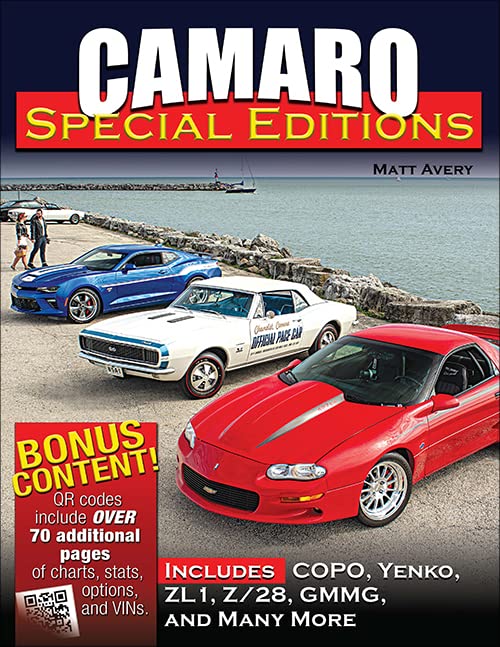
Discover a fascinating array of special edition Camaros written by Chevrolet historian and COPO authority, Matt Avery.
Chevrolet’s iconic Camaro arrived in the fall of 1966 and, although tardy to market, it came ready to mix things up in the wildly popular “pony car” segment. Ford’s Mustang was a runaway success, but this new competitor reined in momentum by offering customers an even closer friend of driving enthusiasts.
A credit to General Motors, the Camaro charged hard out of the gate, becoming an instant hit. In each of its first three years, it sold almost a quarter million units, causing a decline in sales for the crosstown Detroit rival. In the decades to follow,
Chevy crafted Camaro variants to suit everyone with enterprising hot rodders and performance tuners always taking it one step further. Enter the high-octane world of Camaro special editions.
Driven to achieve their own competition success and following the high-revving demands of enthusiasts, numerous Camaro special editions have been produced over the years, becoming some of the most collectible cars of all time.
Covered here are not only the factory models such as Indy 500 and Brickyard 400 pace and festival cars, ZL1s, anniversary editions, IROC-Zs, Player’s Challenge, Hot Wheels editions, Z/28s, and RS/SS cars. Also, Camaro Special Editions covers the legendary COPO cars and dealer go-fast specials from builders including Yenko, Dana, Nickey, Berger, Baldwin-Motion, Gorries, and Dick Harrell.
More modern performance editions are covered as well with Callaway, SLP, SVE, GMMG, Earnhardt, and more. Detailed information is provided on the most notable models from 1967 to today, including build numbers, production specs, and their collectability.
This book is a must-have resource for the Chevy and Camaro faithful.
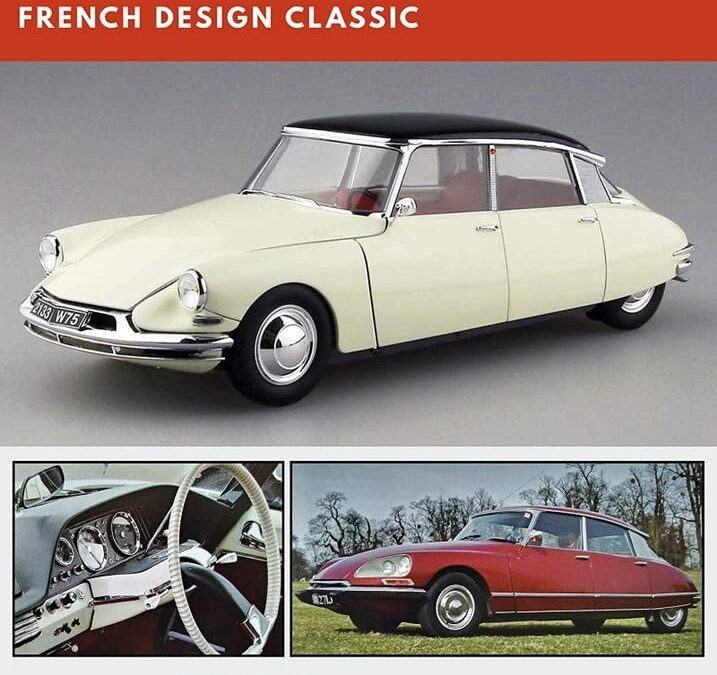
Launched in 1955 yet looking like a sci-fi design proposal for a future then undreamed of, Flaminio Bertoni’s ellipsoid sculpture with wheels that was the Citroën DS stunned the world.
There was a near riot at the 1955 Paris Motor Show launch of the car, orders flooded in for this, the new ‘big Citroën’ (a Voiture a Grande Diffusion or VGD) as the car that replaced the legendary Traction Avant range.
The term ‘DS’ stems from two Citroën parts of nomenclature – the type of engine used as the 11D, (D) and the special hemispherical design of the cylinder head as ‘Culasse Special’ (S): DS out of ‘Deesse’ or Goddess, was a more popular myth of ‘ DS’ origination, but an erroneous one.
But it was not just the car’s aerodynamically advanced body shape (Cd. 0.37) that framed the genius of the DS: hydro pneumatic self-levelling suspension, advanced plastics and synthetics for the construction of the roof and dashboard/fascia, and amazing road holding and cabin comfort were some of this car’s highlights.
Only the lack of an advanced new engine was deemed a missed opportunity. In fact Citroën had created a new engine for the car but lacked the resources to produce it in time for 1955.
DS was a major moment in the history of car design, one so advanced that it would take other auto manufacturers years to embrace. Yet DS in its ‘aero’ design was the precursor to today’s low drag cars of curved form.
Manufactured worldwide, used by presidents, leaders, diplomats, farmers and many types of people, the DS redefined Citroën, its engineering and design language, and its brand, for decades to come.
Prone to rust, not the safest car in the world, and always lacking a smoother powerplant, the DS still became an icon of car design.
Reshaped with a new nose and faired-in headlamps in 1967, DS remained in production until 1975.
Across its life DS spawned an estate car variant as the ‘Safari’, a range of limousines, two-door convertibles, and even coach-built coupes and rally specials.
This car was a product design that became an article of social science – it was that famous and it defined a European design movement upon a global stage then packed with ‘me too’ copyist designs.
The DS or ‘Goddess’ as it was tagged, was a tear-drop shaped act of French confidence in a world of the regurgitation of the known. Some argue that DS and its effect has never been surpassed.
This new value-for-money book provides innovative access to the design, history, and modeling of the revolutionary DS – one of the true ‘greats’ of motoring history and, a contemporary classic car of huge popularity.
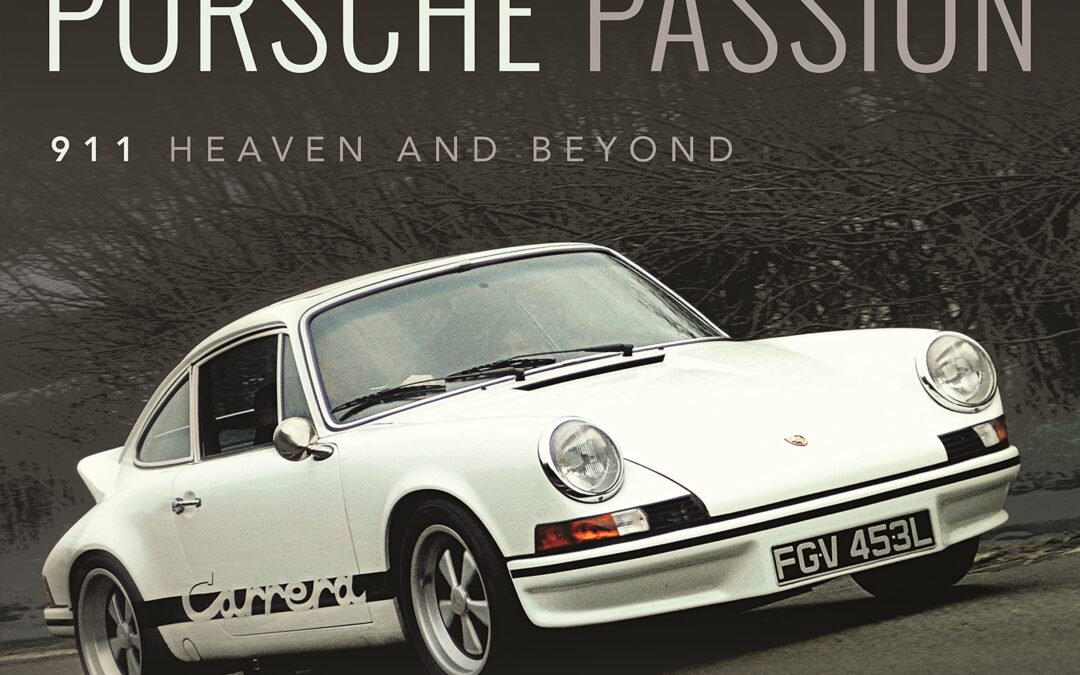
In a book of Porsche photography and engaging conversation, Lance Cole journeys through a personal passion for Porsche –one that many supercar enthusiasts share.
Herein light falls on sculpted metal and paint – shiny and less shiny. Throwing off the conventions of Porsche purism, yet at the same time always respecting the origins of Porsche, and the status of the 911, this is a book that celebrates the engineering and the design language of Porsche amid its culture. From an “oily-rag” 356 to old 911s and new 911s, with a brief alighting upon other cars of the Porsche clan, this is an eclectic collection of enthusiasts “moments” captured across a British Porsche landscape.

Realize your Ford Coyote engine’s full potential by using this detailed resource as a guide to select the right parts for the street or the strip.
Veteran Ford writer and historian, Jim Smart, explains and highlights all of the latest and greatest options to achieve more horsepower and torque, and of course, faster quarter-mile times in Ford Coyote Engines: How to Build Max Performance-Revised Edition.
In this Revised Edition, now covering Generation III engines as well as Generation I & II, upgrades included are engine building techniques, cold-air induction kits, supercharger and pulley kits, better exhaust headers, fuel system and ECU tuning upgrades, and more. Both Ford and the aftermarket have produced an array of parts to squeeze even more power out of your Coyote.
Ford introduced its first “clean slate design” V-8 engines in the early 1990s in Ford, Lincoln, and Mercury models. Known as the “Modular” engine family, the 4.6L engines employed new overhead cams, multi-valve performance, distributorless ignition, and more. This engine had new technology for its time, and it proved to be an extremely durable workhorse that logged hundreds of thousands of miles in police and taxi applications as well as light-duty trucks. And, of course, hotter versions, and even supercharged versions, found their way into performance applications such as Mustang GTs and Cobras.
By 2011, Ford wanted something hotter and more current, especially for its flagship Mustang GT and GT350 models, which were suddenly competing with new 6.2L LS3 engines in Camaros and 6.4L Hemi engines in Challengers. Enter Ford’s new 5.0L “Coyote” engine with Twin Independent Variable Cam Timing (Ti-VCT); it was an evolution of the earlier 4.6L and 5.4L Modular designs. Although the new Coyote engine had increased displacement, it still had far fewer cubes than the competition. Despite less displacement, the Coyote could hold its own against bigger Chevy and Chrysler mills thanks to advanced technology, such as 4V heads with better port and valvetrain geometry. The Coyote is also Ford’s first foray into technology that includes Ti-VCT and cam-torque-actuated (CTA) function, which is a fancy way of saying variable cam timing for an incredible power curve over a broader RPM range. Now, in Generation III, Ford has implement a system using both Port and Direct Fuel Injection, taking advantage of the benefits of both systems in a single application.
Even with all of this new technology, there is always room for improvement. If you are looking for even more power from your new Coyote, look no further than this volume.
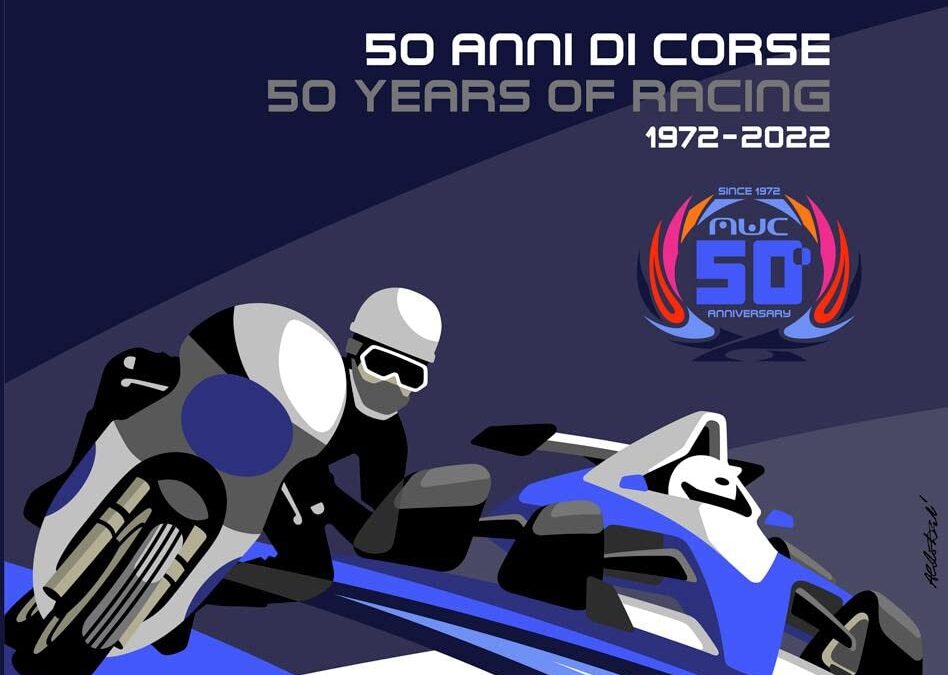
This book presents the first 50 years of the history of the Misano World Circuit “Marco Simoncelli”.
This historic track – the “Autodromo del mare” or seaside circuit – has witnessed unforgettable chapters in the history of motorsport, on two wheels and four, from the very first season in 1972 when the facility was inaugurated, through to the present day. The texts and the extraordinary photographs accompany readers along a thrilling exploration of the history of a circuit that has hosted the world’s greatest riders and drivers from every decade.
In a chronological narration that sets out from Emilia-Romagna’s Motor Valley of the early 20th century, the book describes the principal races held at the Misano circuit, from the pioneering 1970s with the unforgettable duels on two wheels involving the likes of Giacomo Agostini and Renzo Pasolini to those on four wheels featuring Italian and international drivers. Then came the 1980s, with the motorcycling World Championship arriving on the Riviera together with F.2 and F.3 single-seaters and sports prototype and GT cars. The 1990s instead heralded the Superbike championship and the Super Turismo touring cars. The new millennium has seen the circuit develop into an avant-garde facility on all fronts, capable of hosting international events and prestigious collateral events.
The volume is edited by Marco Montemaggi, coordinator and author of numerous books on Italian industrial culture and, in the motor industry, former director of the Ducati Museum and former scientific curator of the Motor Valley project. A scientific committee made up of highly experienced authors and personalities such as Andrea Albani, Davide Bagnaresi, Marco Masetti, Luigi Rivola and Sergio Remondino contributed with passion to the creation of the volume, assisted by many of the protagonists of Italian motorsport, always close to the Misano World Circuit.

- 50 years of BMW history in superb photos and gripping texts
- All the highlights of the company’s history, iconic BMW M models and Art Cars
- BMW owners and their treasures: stories from 50 years
- Lavishly designed illustrated book, officially supported by the BMW M GmbH
- Ideal gift for car lovers and BMW fans
In 1972 the story of BMW M GmbH started with an exclamation mark. Back then, the BMW 3.0 CSL already embodied all the virtues the Bavarian sports department still stands for today: consistent lightweight design, masterful performance and a striking appearance. With this principle the uncompromising saloons BMW M3 and M5 pioneered a whole type of car classification and the models of the M performance group brought a motorsport feeling to the road. On the 50th anniversary of the sports car icons, BMW M Love tells the whole story of the sporty BMW models – and is officially supported by the M GmbH. Apart from sporty saloons the M GmbH always knew how to catch public attention with spectacular racing successes, prototypes and activities. World-famous artists such as Andy Warhol, Roy Lichtenstein and Jeff Koons used Art Cars as their canvas. With numerous stories from 50 years this book presents the full history of the BMW sports cars with the telling ‘M’. Discover the greatest model icons anew, experience the most impressive sporting successes once more and join famous M owners in their love for cars!

Shelby American didn’t last long, but it was a flame that burned incandescently before being extinguished by corporate politics. In less than a decade, it created a legacy that will be revered as long as cars still roar around racetracks. Now, on the sixtieth anniversary of the founding of this iconic company, Shelby American: The Renegades Who Built the Cars, Won the Races, and Lived the Legend relates how the saga unfolded, as told by the men and women who were there at the time.
Although Carroll Shelby was the focal point of the publicity his company generated, Shelby American was staffed by a who’s who of racing legends, from Phil Remington and Ken Miles to Peter Brock and Carroll Smith. And while the shop is often depicted as a menagerie of Southern California hot rodders, it also embraced mechanics and fabricators from Canada, England, Switzerland, Australia, and New Zealand. Like the Cobra itself, the company magically came together as a whole that was greater than its constituent parts.
By incorporating the recollections of dozens of lesser-known crewmen, Shelby American goes behind the scenes to tell long untold and misunderstood stories―the cheat embedded in the turbine Indy car, the oiling woes that sunk the tunnel-port Trans-Am Mustang, even details about the build of the first Cobra in Dean Moon’s cramped garage in Santa Fe Springs. The book also delves into the personalities and hijinks that made Shelby American such a vibrant place to work, whether they were transforming humdrum Mustangs into race-ready GT350 or fighting shop wars with cherry bombs and M-80s.
Always standing above it all was Shelby himself. Dynamic, charismatic, mercurial, mercenary, and a little bit dangerous, he had to fight Ford bean counters as fiercely as he dueled with Enzo Ferrari. But for a few magical years, Shelby managed to beat both of them at their own games.
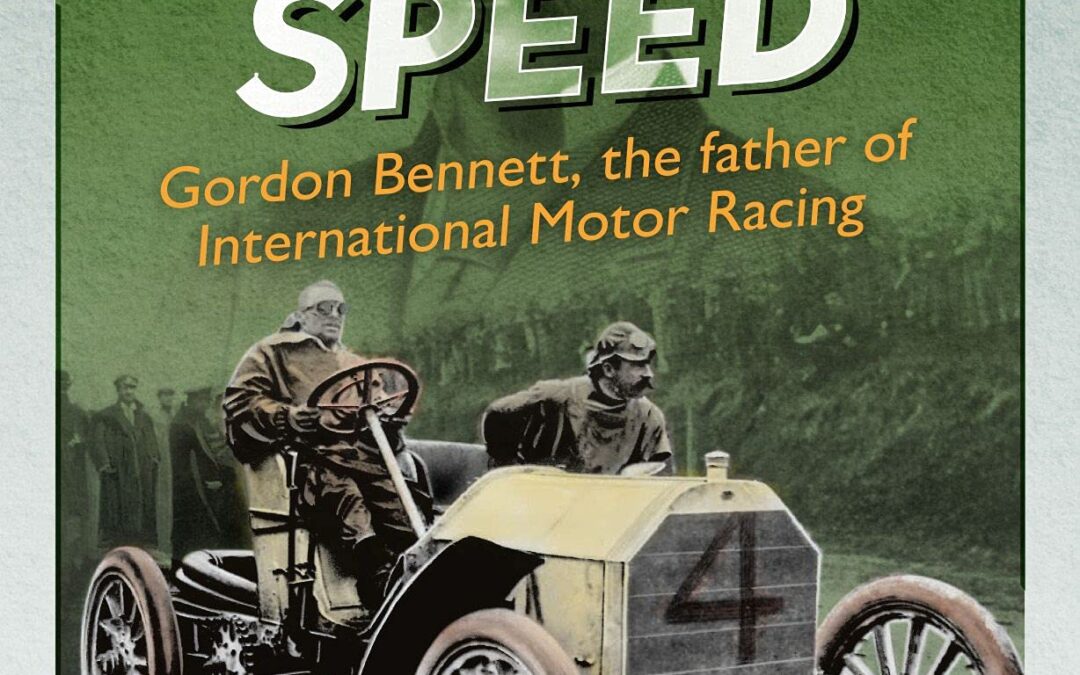
A complete history of the main motoring events and races of the Gordon Bennett Cup.
James Gordon Bennett Jr. (1841–1918) was the spoiled only son of the millionaire founder and publisher of the New York Herald. In addition to taking over publishing duties from his father, Bennett led a dynamic and daring life. He was a tireless supporter of the pioneering fields of technology and sports, always with speed in mind. In 1899, fascinated by new motor cars, he founded the Gordon Bennett Cup. The inaugural race took place in 1900, and though only three countries entered the inaugural race in 1900, it was the beginning of a massive phenomenon. Despite challenges of widespread anti-car sentiment, bureaucracy, speed limits, safety, and design challenges, over the next few years, Bennett grew spectatorship from less than one hundred to eighty thousand.
Bennett’s dedicated promotion of early motor-car racing gave a boost to the global auto industry and provided a foundation for the international racing scene that still excites us more than a century later. Every Gordon Bennett Cup race is documented here with an account of the drivers, the cars, the courses, and the thrilling highs and lows of the events
















